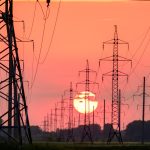A new AI model built for the global majority Microsoft has announced Project Gecko, a research initiative designed to close the performance gap between…
Why Stage 15 load shedding is a switch to a very short fuse

Eskom CEO Andre De Ruyter has come out to clarify what appears to be a case where he was allegedly quoted out of context.
The quote was that De Ruyter warned of Stage 15 load shedding when he most likely mentioned it as a possibility should current measures to remedy capacity issues fail.
This article should bring you up to speed: What happens at stage 15 Eskom load shedding?
Is there a Stage 15 load shedding?
Note: It’s important to note that the above piece was constructed as a worse case scenario. The idea of a Stage 15 prompts interest.
Load shedding schedules only escalate to Stage 8 where about 8 000MW are pulled from the grid to pull the country back from a total blackout.
A last resort to ensure the country does not plunge into a national grid collapse which could cost billions to repair.
To prevent a nationwide blackout different levels in load shedding schedules are implemented in a demand and supply dance to ensure the economy functions.
To reduce load on the grid is load shedding’s main function, in order to avoid Stage 15.
Stage 15
Tarif paying citizens view the term Stage 15 as an escalated issue that largely impacts their pockets.
To make it worse this level in load shedding stage threatens their lively hood.
News of a possible Stage 15 load shedding level kickstarted on Thursday after De Ruyter was quoted as issuing a warning as opposed to deconstructing the issue.
De Ruyter speaking on the Money Show with Bruce Whitfield clarified what he said: “What I said was that if we were forced to implement the minimum emission standards that would require us to shut down 16 gigawatts of generation capacity, that would put us into Stage 15 load shedding.”
The comments come as the country heads into the weekend on Stage 4 load shedding.
De Ruyter said the power utility expected to drop to Stage 2 sometime next week.
The fragility of the system remains in question.
While the CEO provides clarity on plans to alleviate current blackouts, the fragile units remain unstable making it a challenge to plan on Eskom’s forecasts.
Massive new capacity added to the current grid will be a better solution.
De Ruyter said the situation was going to be tight until “we see those renewable units coming onto the grid.”
Also read: : What happens at stage 15 Eskom load shedding?
Featured image: kelly sikkema unsplash

